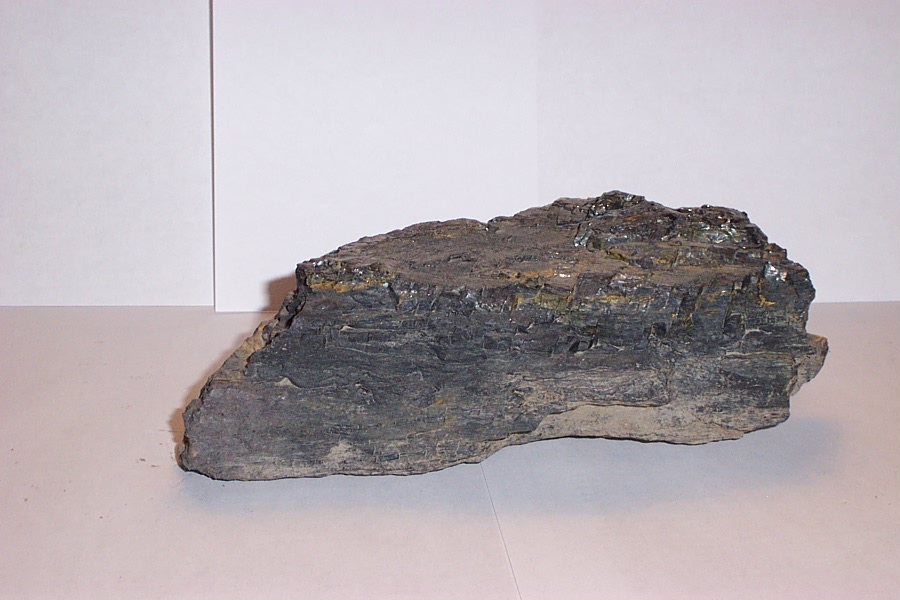- Llewellyn Formation
Infobox Rockunit
name = Llewellyn Formation

type =Geological formation
prilithology =Sandstone
otherlithology =Shale ,Conglomerate ,Coal
namedfor =Llewellyn, Pennsylvania
namedby = G. Wood, 1964
region =Appalachian Basin of
easternNorth America
caption = A hand sample of the bottom of the Llewellyn fromSt. Clair, Pennsylvania
unitof = none
subunits = none (most economic coal beds are named)
thickness = up to convert|1500|ft|m|-1
extent = Anthracite fields of Pennsylvania
age =Late Pennsylvanian , ~300 MaThe Llewellyn Formation is a mapped bedrock unit in easternPennsylvania . It was previously known as the "coal measures" and the post-Pottsville rocks. The formation is named for the community of Llewellyn in Schuylkill County.Wood, G.H., Trexler, J.P., Kehn, T.M., (1964). Geology of the West-Central Part of the Southern Anthracite Field and Adjoining Areas, Pennsylvania. United States Geological Survey, C-46.]Description
The Llewellyn is defined as a gray, fine to coarse grained
sandstone ,siltstone ,shale , conglomerate, andanthracite coal in repetitive sequences. Although gray (light to dark) is the dominant color, other colors described include: buff, dark to light brown, and black. [Berg, T.M., Edmunds, W.E., Geyer, A.R. and others, compilers, (1980). Geologic Map of Pennsylvania: Pennsylvania Geologic Survey, Map 1, scale 1:250,000.]Depositional Environment
The Llewellyn was deposited upon a broad flat plain with sediment-choked rivers delivering detritus from the eroding uplands that were located to the southeast. Fluctuations in sea-level, coupled with the shifting nature of the rivers and highlands allowed dense
forests to grow on the broad plain. As a result, a large amount of organic matter was buried and eventually turned to coal. The repetitive nature of these sediments have been well-documented and are often calledcyclothems .Edmunds, W.E., (2002), Coal in Pennsylvania (2nd ed.): Pennsylvania Geological Survey, Educational Series 7.]Fossils
Nearly 100 fossils have been identified in the Llewellyn; almost all of them have been plants. The major divisions of flora that have been recognized include:
Lycopodiophyta ,Arthrophyta ,Pteridophyta , andPteridospermatophyta . [Oleksyshyn, J. (1982). Fossil Plants from the Anthracite Coal Fields of Eastern Pennsylvania. Pennsylvania Geologic Survey, G72.] Fossils have been recovered from evey rock type in the Llewellyn but are predominantly found in the siltstone, shale, and coal layers.Age
Relative and fossil age dating of the Llewellyn places it in the late-Middle to Late
Pennsylvanian , being deposited between 308 to 300 (±1) million years ago. It was thought that the uppermost beds of the Llewellyn were ofPermian in age, but no fossils have been found from that era. The bottom of the formation is placed either at the bottom of Buck Mountain (no. 5) coal bed or at the bottom of theunderclay or shale bed below this coal measure. Since this is the last bed deposited in theAppalachian Basin in eastern Pennsylvania that still exists, only recentalluvial and colluvial deposits rest on top. [Berg, T.M., et al., (1983). Stratagraphic Correlation Chart of Pennsylvania: G75, Pennsylvania Geologic Survey, Harrisburg, Pennsylvania.] ,]Economic Uses
The economic gains of this formation have been exploited to their greatest potential in years past. The peak year of anthracite production was in 1917 when nearly 100 million tons were mined. Anthracite production has declined every year since then. Recently, the old spoils of the mining operations (culm) have been refined to extract more coal for power production.
References
ee also
*
Geology of Pennsylvania
Wikimedia Foundation. 2010.
